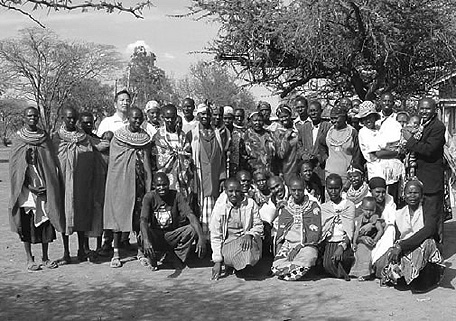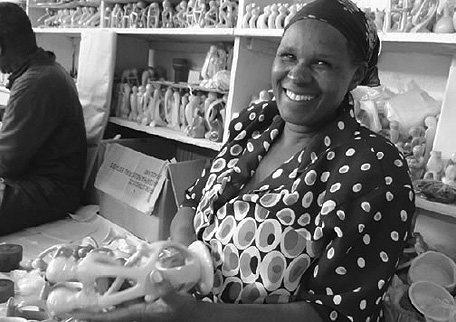Japan's Official Development Assistance White Paper 2011
Column 4
Revitalizing Communities through Business by Focusing on the Regional Characteristics
—Spreading the One Village One Product Movement in Africa—
Africa faces a huge social issue: the drastic relocation of populations from rural villages to large cities. Countries across the continent are struggling to reduce the disparity between urban and rural areas, and to revive remote communities.
Japan promotes a community-driven rural development program called One Village One Product (OVOP). This seeks to nurture local products, built a market for them, and use it to invigorate the local economy. The program is based on the model of Oyama Town in Japan's southern prefecture of Oita, which has succeeded in revitalizing its own economy through the cultivation of local ume plums and chestnuts. At present, OVOP has grown into a movement that encompasses all of Africa, Asia, and Latin America.
Acknowledging OVOP as an effective means of revitalizing its local economies, the government of Kenya has established within its offices a secretariat dedicated to the program.
Kenji Aizono is based there in Kenya to spread OVOP activities throughout Sub-Saharan Africa(*1). After graduating university, Mr. Aizono worked at a private company before becoming a JICA volunteer coordinator in the Federated States of Micronesia, which started off his involvement in international cooperation. He later became a JICA regional project formulation advisor to promote the OVOP movement in Malawi, and in January 2010 moved his base to Kenya.
OVOP supports the making of value-added products and services that use locally available resources and incorporate the residents' creativity, and the development of human resources to continue making those products. Hence, coordinators do not give the residents direct advice as to what to make or who to sell it to. Their single purpose is to back up the residents' creativity and efforts. Mr. Aizono puts it this way: "Our role is to provide support when needed, and only when the residents themselves show motivation."
A workshop Mr. Aizono held to introduce the OVOP movement has inspired various groups to come forward and submit unique products. One example is a heatless cooking pot. This is a basket woven with banana fibers that acts as a warmer. Line it with old rags, place a heated pot containing ingredients inside it, covered the surface with a cloth, and it uses only residual heat to cook the contents and keep the food warm. This was a wonderful idea, as it even saved fuel, but unfortunately it came up just short of being a sellable product.
A unique example is tree stump crafts. The Kenyans cut down many trees to make furniture and charcoal, but leave the stumps behind without using them. One group thought of a business that processed these stumps into tables and chairs. This idea worked out. A "tree stump bar" that uses this furniture has emerged in Kenya, and the products are now exported to Europe.
Mr. Aizono says, "The essence of OVOP is to cheer on these motivated groups. As the activities spread, they will attract more Africans full of vitality and enhance the chances of their developing products that hadn't existed before. In ten or twenty years' time, I'm confident that our activities will transform into a much bigger movement and contribute to invigorating communities through business."
(*1) One Village One Product (OVOP) Project

Mr. Aizono (fourth from left) explaining OVOP to a group manufacturing and selling beadwork (Photo: JICA)

Right: Woman holding a commercialized stone object made in Kenya (sold in Japan and Europe) (Photo: JICA)
